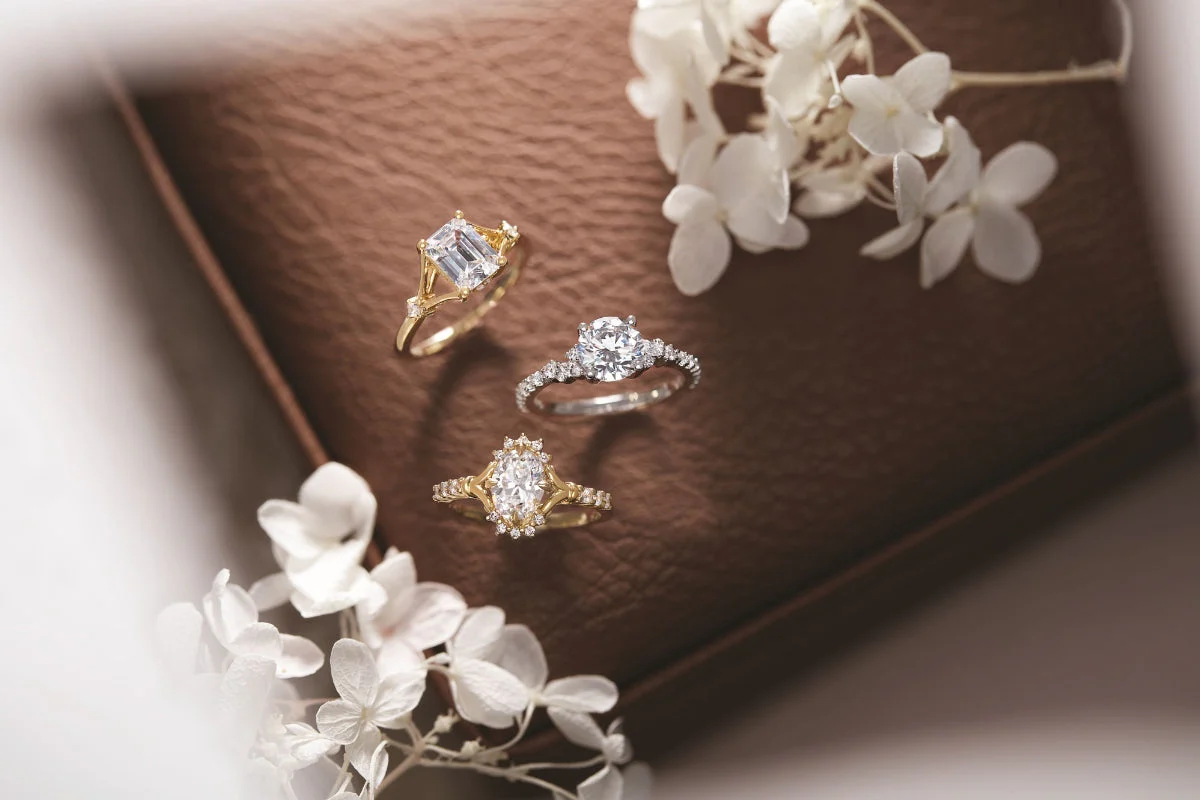Diamonds have long been Diamond Rings regarded as one of the most coveted and symbolically powerful gemstones in the world. Their rarity, unmatched brilliance, and timeless appeal make them the centerpiece of one of the most important and enduring jewelry pieces: the diamond ring. Whether it’s for an engagement, wedding, or just as a statement piece, diamond rings carry deep cultural, emotional, and aesthetic significance. This article delves into the history, symbolism, and trends associated with diamond rings.
A History Steeped in Luxury and Romance
Diamonds have fascinated humanity for centuries. Known for their extraordinary durability and sparkle, they were once believed to have mystical powers. Ancient civilizations, such as the Greeks and Romans, thought diamonds were tears of the gods or fragments of stars, granting the wearer divine protection and strength.
The tradition of giving diamond rings as symbols of love began relatively recently, around the 15th century. The first recorded use of a diamond ring as a betrothal symbol was in 1477, when Archduke Maximilian of Austria presented Mary of Burgundy with a diamond engagement ring. The gesture quickly gained popularity among the European elite and slowly spread across the globe. By the mid-20th century, the idea of diamonds as the ultimate symbol of love was cemented, thanks in part to clever marketing campaigns, like De Beers’ iconic slogan, “A Diamond is Forever.”
The Symbolism of a Diamond Ring
At its core, a diamond ring represents commitment, love, and eternity. The diamond, with its unparalleled hardness (rated 10 on the Mohs scale), is often associated with strength and resilience—qualities that many people seek in a lifelong partnership. The clarity and brilliance of the diamond symbolize purity and clarity in love, while its timeless nature represents the lasting bond shared between two individuals.
In engagement rings, the diamond serves as a promise: a pledge of a shared future, no matter the obstacles that may come. The ring itself is a circle, a shape with no beginning and no end, further reinforcing the idea of an everlasting connection.
Understanding the “Four Cs” of Diamonds
When shopping for a diamond ring, understanding the “Four Cs” is essential in making an informed choice. These four criteria—Carat (size), Cut (shape and craftsmanship), Clarity (internal imperfections), and Color (the absence of color)—all impact the quality and value of the diamond.
- Carat: This refers to the weight of the diamond, not its size. While a larger carat weight often equates to a more expensive diamond, it is the other Cs that contribute more to the overall beauty and brilliance of the stone.
- Cut: The cut is perhaps the most critical factor in determining a diamond’s brilliance. A well-cut diamond reflects light in a way that enhances its sparkle. The cut refers to how well the diamond has been shaped and faceted. Even a high-carat diamond can appear dull if it is poorly cut.
- Clarity: Diamonds often contain tiny imperfections, or inclusions, that are not visible to the naked eye. The fewer the inclusions, the higher the clarity. However, most inclusions are microscopic and do not affect the diamond’s overall appearance.
- Color: The color of diamonds ranges from colorless (which is the most valued) to light yellow or brown. The less color, the higher the quality. A colorless diamond allows more light to pass through, creating more sparkle.
Diamond Ring Styles and Trends
Over the years, the design of diamond rings has evolved from traditional solitaires to more intricate, modern styles. Whether you’re seeking something classic or unique, there’s a design to suit every taste.
- Solitaire: The solitaire is the classic, timeless choice. With a single diamond set on a simple band, this design places the focus entirely on the stone itself. The solitaire has been the hallmark of engagement rings for decades.
- Halo: The halo setting surrounds the central diamond with smaller stones, amplifying the size and brilliance of the main diamond. This style is perfect for those who want their diamond to stand out and shine even brighter.
- Three-Stone: Symbolizing the past, present, and future, the three-stone design features a central diamond flanked by two smaller diamonds. This style is popular for engagement rings and is often used to symbolize the journey of a couple’s love.
- Pavé: In a pavé setting, the band is covered in tiny diamonds that are set closely together, creating a continuous sparkle. This style offers a lot of shimmer and is often chosen by those who want a more glamorous or luxurious look.
- Vintage and Antique: Inspired by designs from previous eras, vintage diamond rings feature intricate metalwork, filigree, and distinctive settings. These rings often carry a sense of history and uniqueness.
- Modern/Minimalist: Many people today opt for clean, contemporary designs that emphasize simplicity. A modern diamond ring may feature a sleek, plain band with a brilliant cut diamond, or it might integrate alternative materials, like rose gold, platinum, or even colored gemstones.
Ethical and Sustainable Diamonds
In recent years, the conversation around the ethics of diamond mining has grown louder. Issues such as child labor, environmental degradation, and human rights abuses in diamond-producing countries have raised concerns among consumers. As a result, many people are now turning to conflict-free diamonds and lab-grown diamonds as alternatives.
- Lab-Grown Diamonds: These diamonds are chemically and physically identical to mined diamonds, but they are created in a laboratory setting, offering a more sustainable and ethical choice. Lab-grown diamonds are also often more affordable than natural diamonds of similar quality.
- Conflict-Free Diamonds: The term refers to diamonds sourced through ethical practices, ensuring they are not associated with armed conflict or human rights abuses. Many jewelers now offer certification to ensure the diamonds they sell are conflict-free.
Conclusion: The Enduring Allure of the Diamond Ring
A diamond ring remains one of the most powerful symbols of love, commitment, and luxury in the world. Its beauty, resilience, and rich history ensure that it will continue to captivate hearts for generations to come. Whether you’re selecting an engagement ring, a wedding band, or simply a statement piece of jewelry, the diamond ring serves as a timeless reminder of love’s enduring nature. And, as trends evolve and sustainability becomes an increasingly important consideration, the world of diamond rings will continue to reflect the values of modern consumers while retaining the charm that has made diamonds a symbol of lasting love for centuries.

